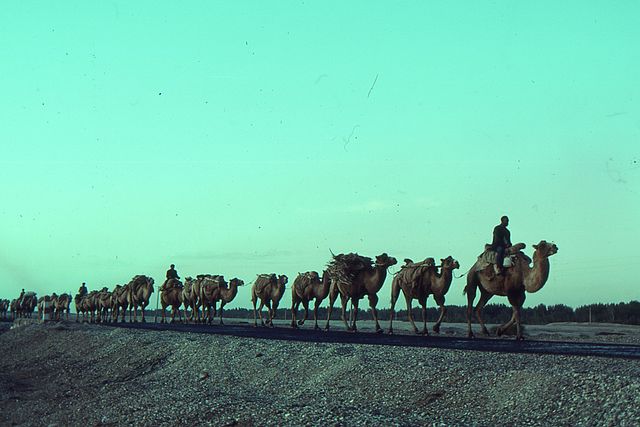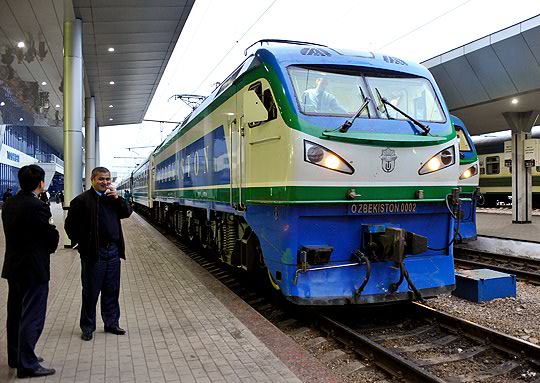 (Photo: Wikimedia)
(Photo: Wikimedia)
by David Parmer
Just about a year ago (November 2013) RG21 took a look at the development of the New Silk Road, (http://research-group21.com/admin/mt.cgi?__mode=view&_type=entry&blog_id=3&id=98) the revival of the ancient route linking the Orient and Occident. China is now giving focused attention to this project, and so this week we will bring you an update on developments.
China’s Xinhua News agency reported on November 8, that President Xi Jinping had pledged $40 billion for a New Silk Road Fund to link China and Europe. The fund to be overseen by Chinese banks, notably China Development Bank would promote the development of railways, ports, roads, pipelines and ports and related infrastructure.
The plan calls for not only a land-based Silk Road, but a maritime one as well. The land route would begin in Xi’an and end up in Europe, while the sea route would start in Guangdong province and terminate in Venice.
 New Silk Road (Xinhua via Diplomat)
New Silk Road (Xinhua via Diplomat)
The plan is bold and ambitious, but not without its dangers. The vulnerability for the land route lies in its traversing so many countries, subject these days to wars, revolutions and changes of government. A large section of the route goes through Russia which has ongoing tensions with Europe over Ukraine. Logistically, problems of customs clearance and different railroad track gauges need to be addressed. It seems that while the world is focusing on the Middle East and Iraq, China is taking a long term view that may just alter the face of global trade in modern times as did the original Silk Road in ancient times.
Xinhua : http://news.xinhuanet.com/english/china/2014-11/08/c_133774993.htm
Financial Times: http://www.ft.com/intl/cms/s/0/e8664a0e-44dd-11e4-9a5a-00144feabdc0.html
 日本語
日本語 English
English 中国語
中国語